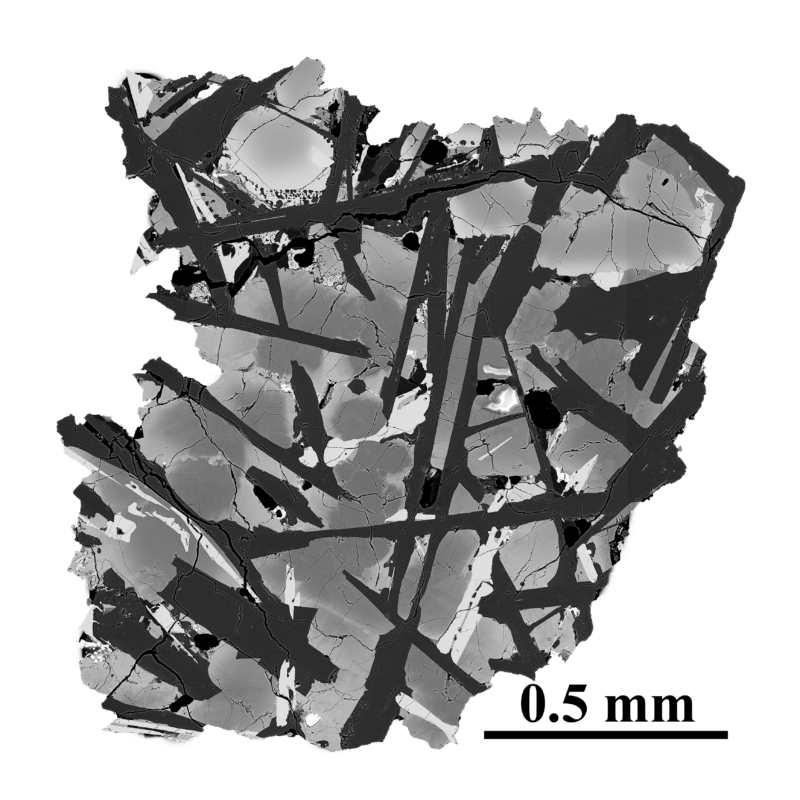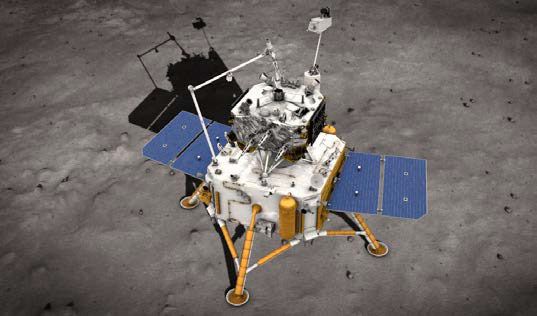
Chang'e-5 represented a major step forward for China's lunar program, as it was the first of the country's missions to return samples to Earth. Now the results of dating the samples are in, and it's clear that while the deposits are old, they're young enough to be a bit of an oddity.
To the Moon and back
China has now successfully landed several probes and rovers on the lunar surface as part of a larger exploration program. Chang'e 5 represented the next step, as it had a drill to obtain subsurface samples and a return vehicle that could take them back to Earth. The spacecraft successfully landed almost two years ago, and a few weeks later, it returned roughly 2 kilograms of rock to Earth from the Moon.
China has the benefit of decades of knowledge gained since the Apollo missions, along with a greater theoretical understanding of the Moon's formation. And it carefully chose Chang'e 5's landing site, a large volcanic deposit called the Oceanus Procellarum, thought to be one of the younger areas of the Moon's surface. But "younger" covers a lot of ground, as estimates based on its crater count ranged from 3.2 billion years old down to just 1.2 billion.
Getting a precise age on the deposit would provide a number of benefits. To begin with, the Moon presents a "clock" for the cratering of our entire Solar System. It's the only place where we can match crater counts to ages obtained from rock samples; we then use those numbers to put ages on other bodies based on their crater counts. The date range for the Chang'e 5's landing site includes periods for which we don't have dates from radioactive decay.
In addition, understanding when the Moon was volcanically active to produce large deposits like the Oceanus Procellarum can help us craft more accurate models of the Moon's formation and evolution. Volcanic activity requires heat, and that heat comes from a combination of the body's formation and its composition, which will include radioactive isotopes that produce additional heat.
Marking time
The samples used for the new study were remarkably small: two cubes, each about three to four millimeters per side. Yet that tiny volume held a remarkable mix of minerals (clinopyroxene, plagioclase, olivine, quartz, cristobalite, and ilmenite all make appearances). The bulk composition is consistent with other volcanic deposits on the Moon, however, and most of the differences between the two samples can be ascribed to the rate at which they cooled.
The research team, representing a large international collaboration, used lead isotopes to estimate dates for multiple sites within each sample. (Volcanic rocks often contain materials that solidified at different time points and therefore can produce a range of ages.) The results indicate that one of the samples was 1.893 ± 0.280 billion years old and 1.966 ± 0.059 billion years old. Combining all the data from both samples produces an age of 1.963 ± 0.059 billion years.
In good news, all of the uncertainty ranges overlap. And while radioactive dating can be skewed by some factors, there's no indication that those factors are in play here. There's no sign of contamination by other material, either present at the eruption site or emplaced there by nearby impacts.
The overall composition matched well with remote sensing done both from orbit and by the hardware that China landed. So overall, the evidence argues that the entire Oceanus Procellarum was likely to be deposited about two billion years ago.
Implications
When it comes to the Solar System's crater clock, the new date for the Oceanus Procellarum rules a few proposed chronologies out, as it indicates fewer impacts since its formation than those chronologies would have predicted. Other models are consistent with the date, however, so the data doesn't call for major revisions.
The bigger surprise is in explaining the evolution of the Moon. The age "implies that nearly 2,000 cubic kilometers of basaltic magma erupted near the landing site almost 1 billion years later than the emplacement of any previously measured lunar basalts." If these dates represent the deposit as a whole, the Moon had a more active volcanism than we might otherwise expect.
In other areas of the Moon, younger volcanic deposits are associated with elements like potassium and thorium, which provide heat through radioactive decay. The presence of these elements seemed suggestive, as it could indicate that higher radioactivity provided the heat needed to keep things molten later. The samples obtained by Chang'e 5 also have higher levels of these radioactive elements but not higher than other volcanic deposits, so the idea that there's a linear relationship between radioactivity and age of volcanism doesn't hold up.
We're therefore left with a fair bit of uncertainty about how the Moon managed to support such large-scale eruptions so late in its history. Smaller-scale eruptions clearly went on later, caused by local variations in areas where hot material was trapped. But it's not clear whether these processes could support something like the Oceanus Procellarum eruptions.
Science, 2021. DOI: 10.1126/science.abl7957 (About DOIs).



3175x175(CURRENT).thumb.jpg.b05acc060982b36f5891ba728e6d953c.jpg)

Recommended Comments
There are no comments to display.
Join the conversation
You can post now and register later. If you have an account, sign in now to post with your account.
Note: Your post will require moderator approval before it will be visible.